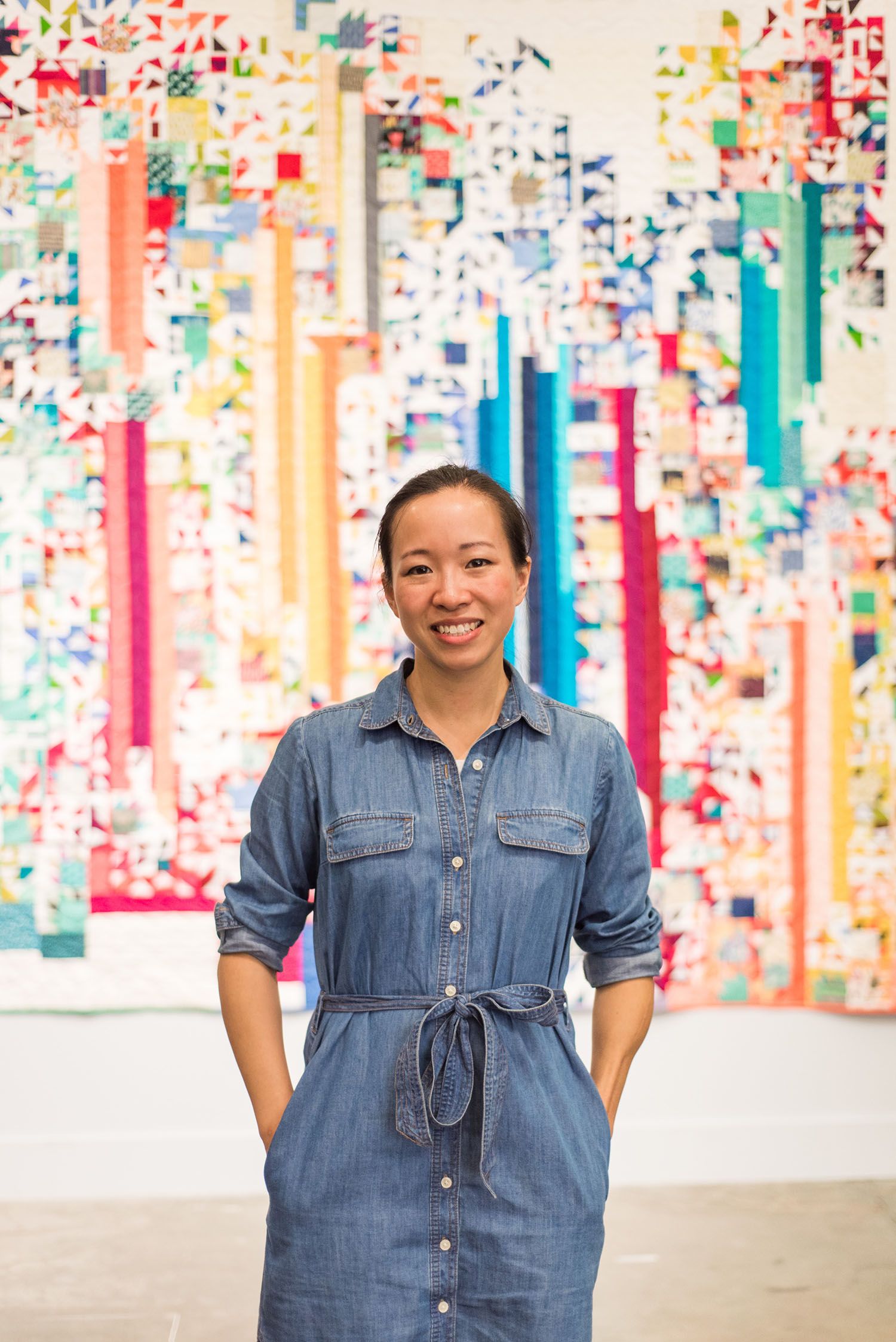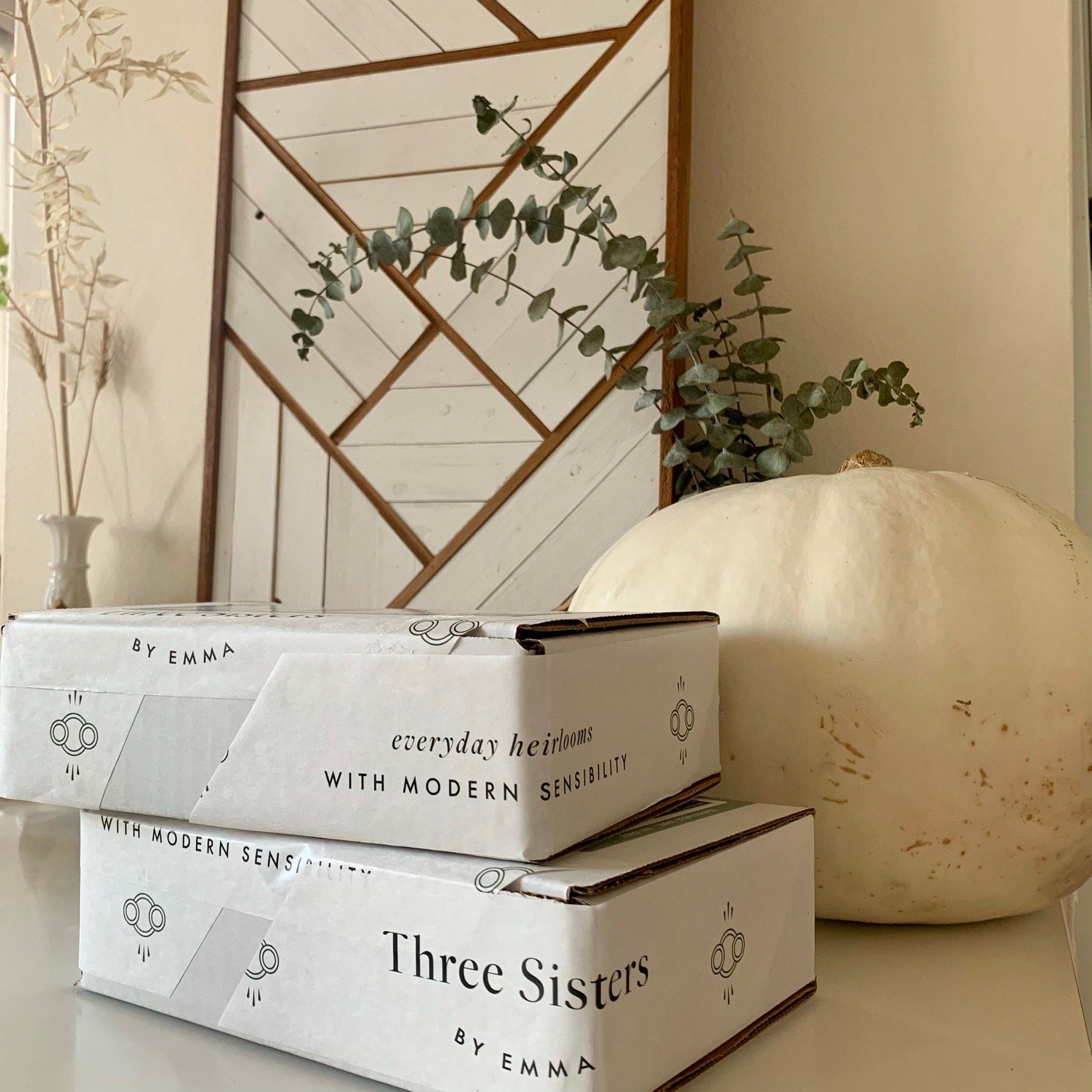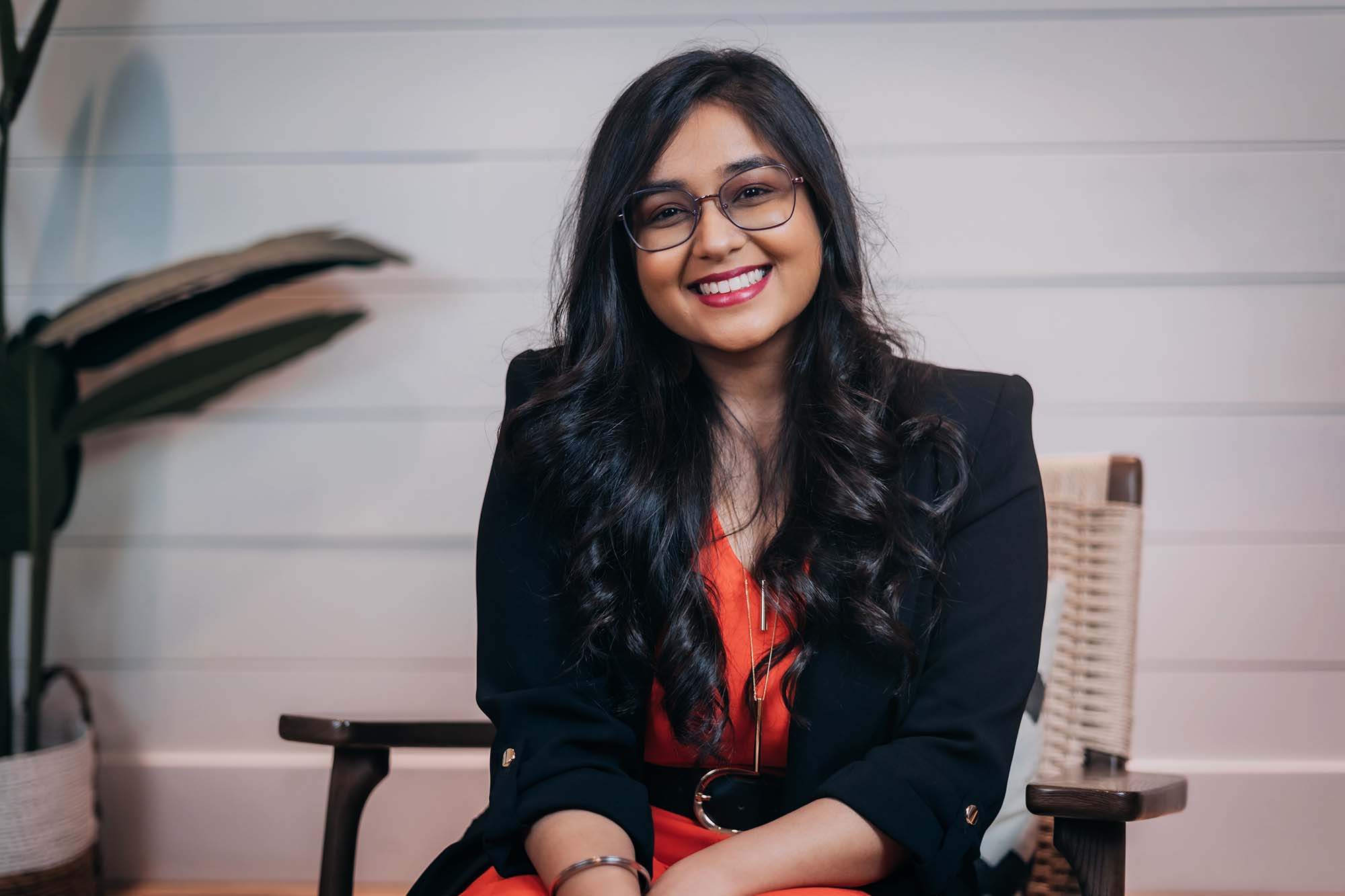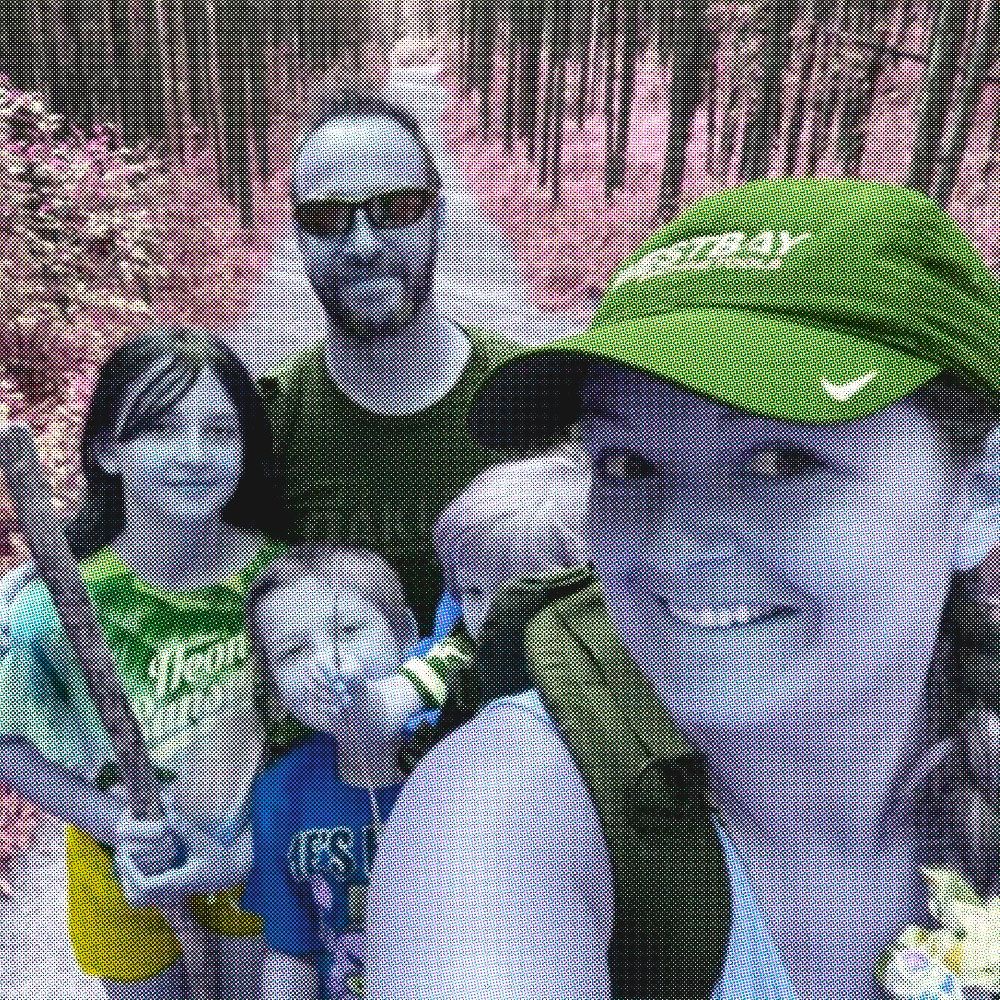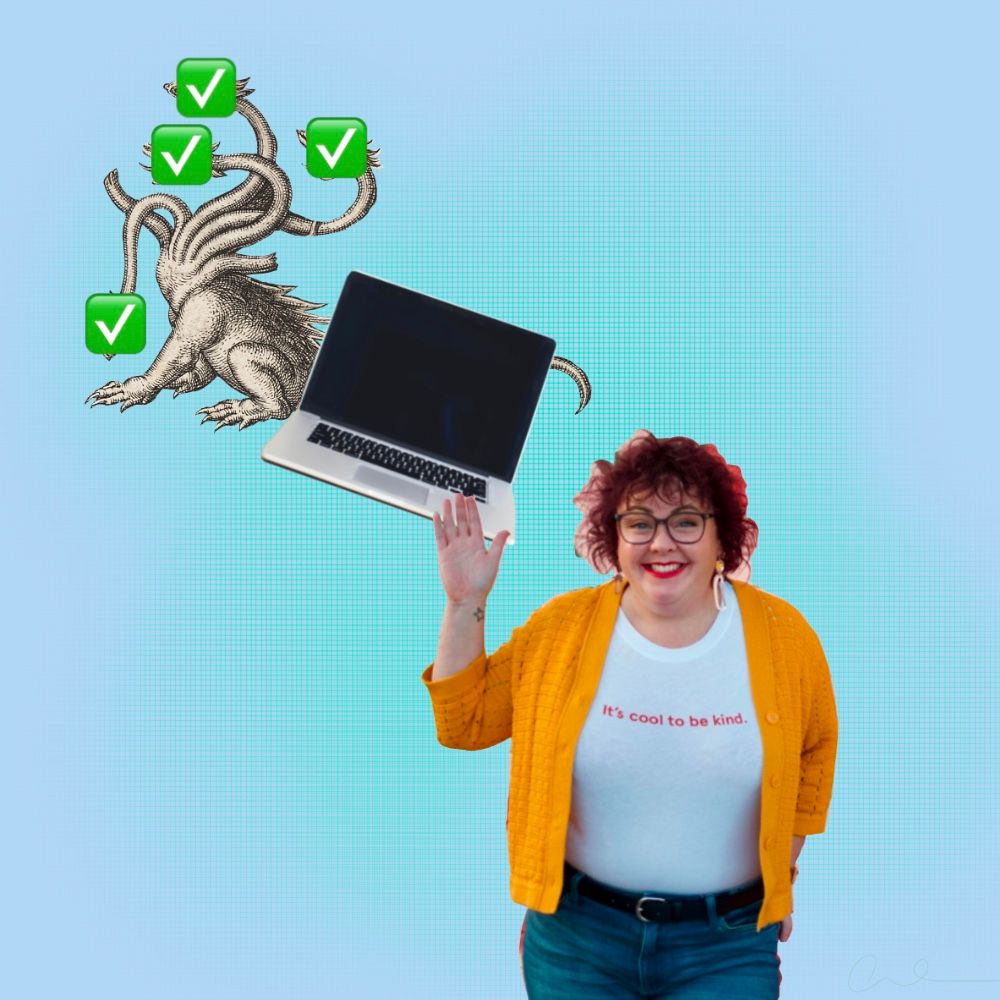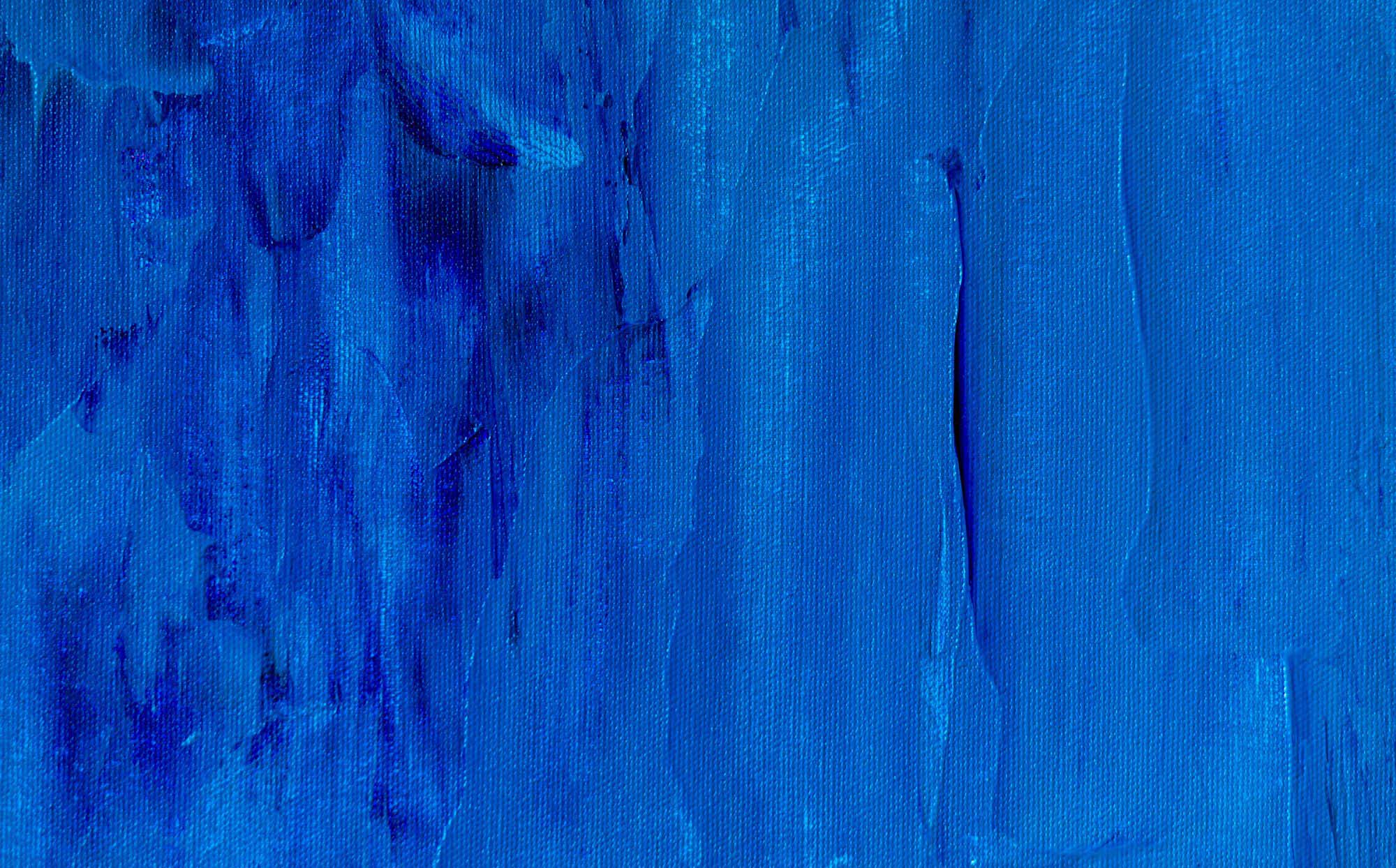Andrea Tsang Jackson is a designer and architect by training. So when she started quilting and coming up with her own patterns, she immediately saw the potential of the technique, both as a creative outlet and as a potential source of income. With two young kids at home, she was looking for a way to earn a living — “I wanted to work,” she says — while maintaining a flexible schedule. She joined her local Modern Quilt Guild chapter and applied to sell goods at a craft show — and 3rd Story Workshop was born.
Fast-forward five or six years, and Tsang Jackson has unlocked a whole list of achievements, among them publishing a book, teaching classes, working as an artist in residence, exhibiting her work in galleries and collaborating with numerous other creators. Her greatest success, though, might be that she’s found balance in her work: she’s developed a business model with multiple revenue streams to keep the money flowing while leaving room for creative fulfillment and bigger projects, too.
How did she do it, and what lessons has she learned along the way? Here are some tips to help you with your business plan, too.
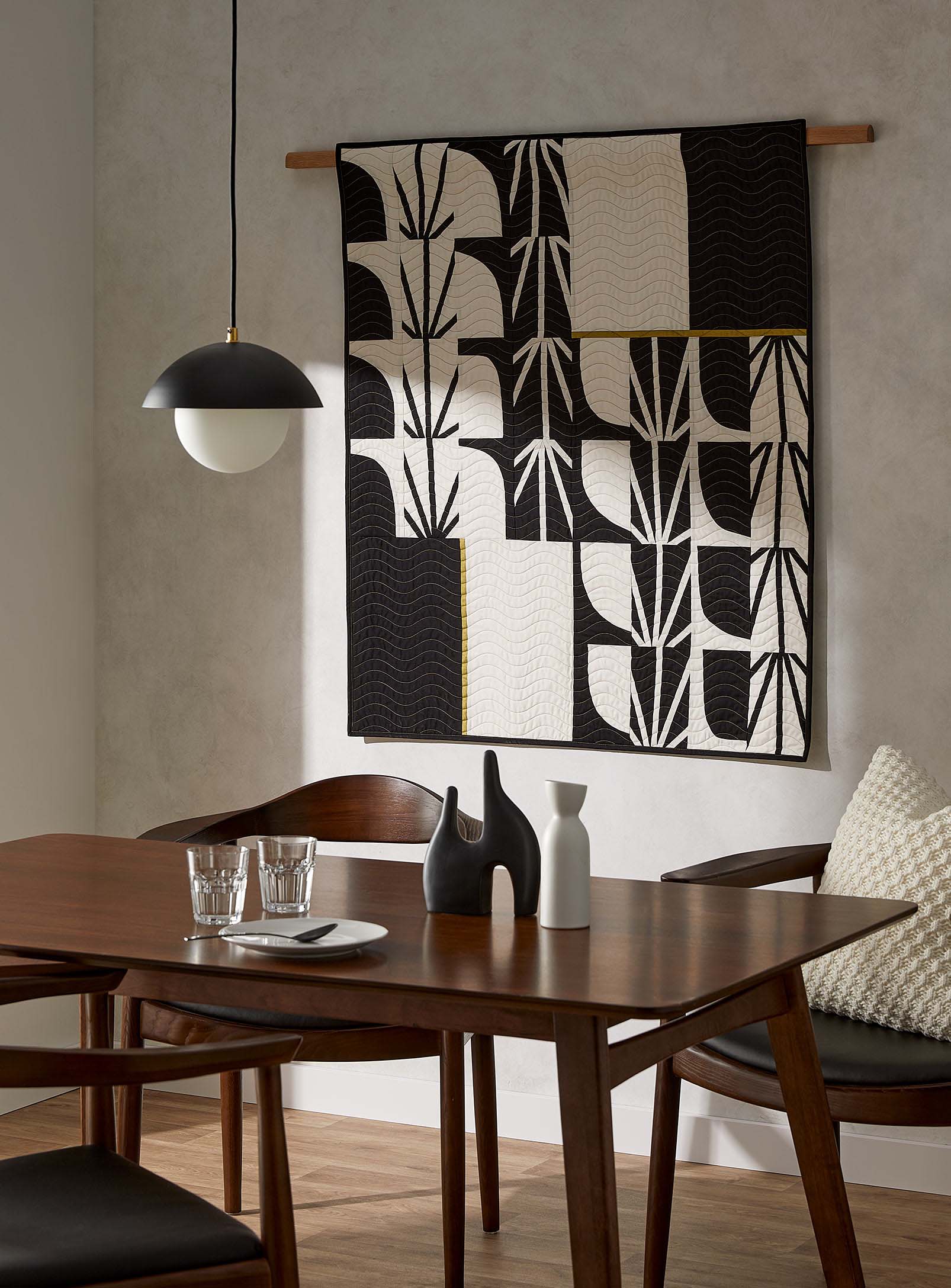
“I named 3rd Story Workshop without any reference to sewing to leave it open, because I knew that I wanted to bring in all my design knowledge. My first launch was at a craft show in 2016, selling quilted products — pillows and wall hangings. I think I lasted a year. I had always known quilting wasn't easily scalable, unless I was going to hire production sewists. And I didn't really want to, so I pulled back.
One of the benefits of craft shows is you get to meet people. I had some great conversations about modern quilting. I had a lot of people ask me if there were patterns for the work I was doing: gemstone quilts, pillows and wall hangings. I said no, not yet, but I do plan to — because that was my original plan.
A little bit less than a year after I founded 3rd Story Workshop, I finally got to those patterns. I designed some and put them in my Etsy shop as PDF downloads. This was the intention all along: a PDF is scalable, it’s in people’s hands right away, they can start their projects immediately after purchase. And it doesn't take me any shipping, packing or production time once I've done the research and development. All the costs and time are up front. And then a year and a half after I launched my first gemstone pattern, a publisher approached me and asked me if I wanted to write a book on my gemstone patterns, so I ended up doing that project in 2018. I call that the design and, eventually, teaching branch of what I do.
Alongside that, I started trying to understand what it was to be an artist, because there was work I wanted to do that the market would not necessarily pay for: the weird, wacky stuff that I wanted to spend hundreds of hours on, that I thought was worthwhile but I couldn't spend time doing without an income. I looked for opportunities, and a residency came up in 2017 at the Canadian Museum of Immigration at Pier 21.
I worked on a collaborative quilt with visitors to the museum, collecting stories and working through a small textile exercise — not even sewing, just fused pieces of fabric. People were telling their stories through the fabric, and I was afforded the opportunity to sculpt these stories into a larger work. I finally started to think of myself as an artist, because I was making an income doing work that was not necessarily something that somebody wants to acquire for their home to hang on the wall or use on a bed — it’s not very usable. That started me on the track of how to do work that is creatively fulfilling while also doing work that the marketplace will pay for.
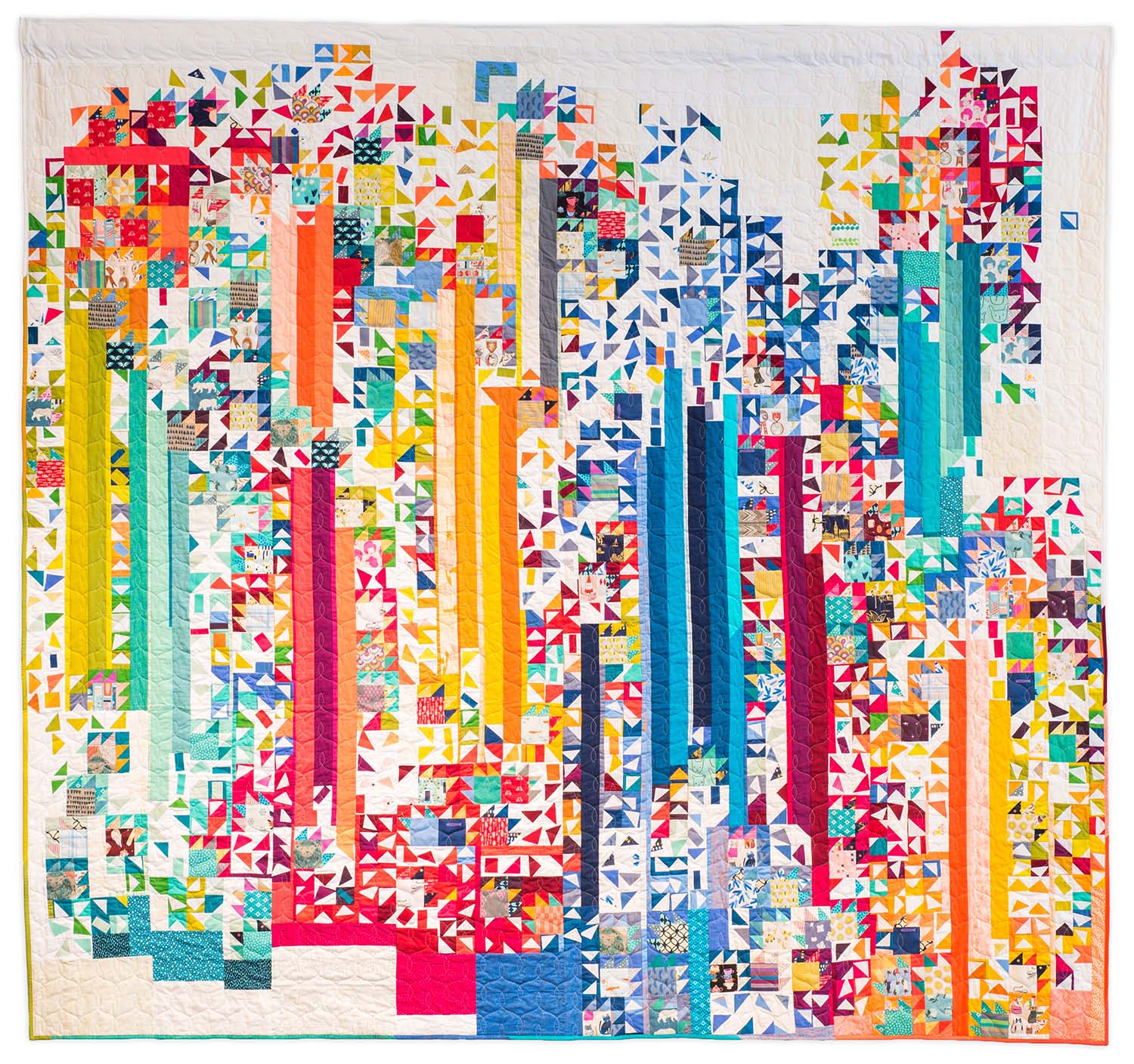
There's these two tracks. There's the design and teaching part, which is the marketable stuff. And then there's what I call my art practice, which is the things that are a little bit more out there that require grant funding, or commissioned work, or contracts with institutions. Even if you go to 3rdstoryworkshop.com, the first thing you see is “Welcome,” and then [you choose between] my artist website and modern quilting and resources. Because they're completely different audiences. Of course there’s overlap, a symbiotic relationship between those two things. But that's how it works in my brain.
Last year, I only produced two new patterns. But putting out two new patterns a year is plenty for me in terms of workload. It takes months to design, test, write, make prototypes and samples. And I want to leave room for commissions and other projects. So two seems like a pretty good rhythm.
When I was first starting to design patterns, magazines would approach me and say, would you like to develop a pattern for our magazine? They pay a flat fee, and they have rights to it for whatever their terms are — six to 12 months. And then I get all the rights back to publish and sell it however I want. I'm always looking for somebody to pay for that research and development. I've also used that model for a commission, where I ask the person if I'm able to reuse the design for teaching and quilt patterns later. They're usually quite happy to support the work further by not holding on to the rights to that design. So they're paying for the upfront work and then I can recycle or rejig it so that I can teach with it or release the pattern later on.
I have also been working with Alissa Kloet at Keephouse Studio. We did a residency together in New Brunswick in 2019, and we thought she would design some fabric and I would come up with a new quilt pattern and we’d sell them as a kit. I would be the marketing part of that partnership as well as the pattern design and sample making, and she would be the production and shipping as well as doing the screen printing and fabric design. Three months after those releases, I have the rights to the patterns, so I can sell them on my own without the fabric bundle.
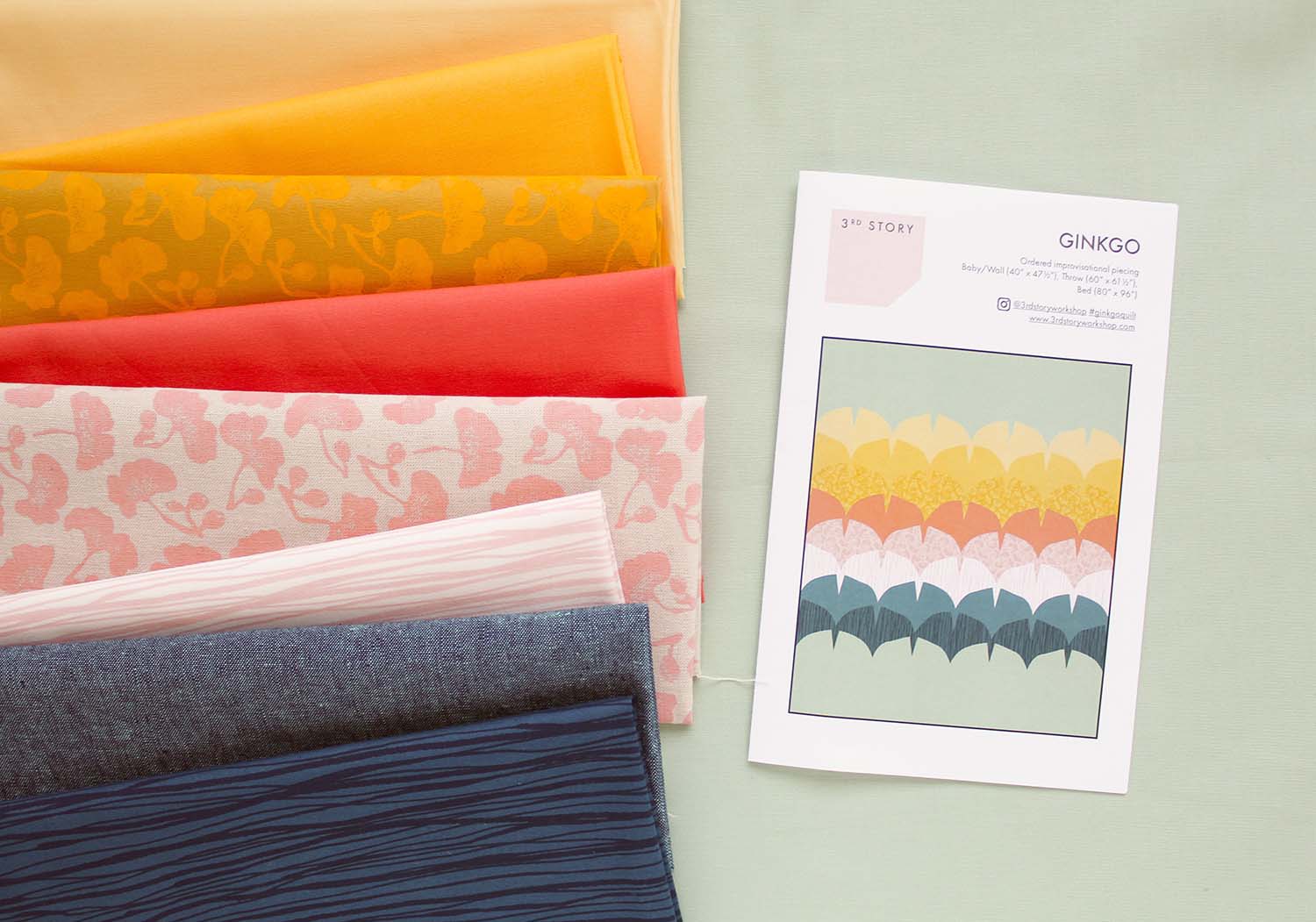
A few years ago I developed a mission statement for my work. I came up with three things that were really important to me as an artist and as a business person. Part of the mission is to let people know what modern quilting means today — that’s number one. Number two is to help people on their creative journey. And number three is to elevate domestic art to be seen as equal to other forms of art such as painting or photography. Those are the three things that I usually run my opportunities through. If it doesn't hit any of those things, then it probably should be a no.
Having a mission statement helps you focus your work. There are lots of things that can come up for you to do, but if they don't serve what you want to accomplish, what you want to see in the world or what you can offer the world, then it's just a distraction, and doesn't necessarily put you on that path to to where you actually want to go.”

